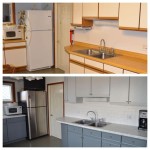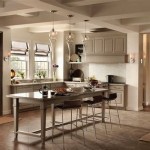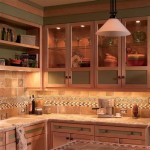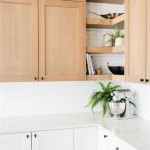Do I Need to Prime Kitchen Cabinets Before Painting?
Painting kitchen cabinets is a common and effective way to revitalize a kitchen's appearance without undertaking a full-scale renovation. The outcome, however, hinges significantly on proper preparation, and a central question arises: is priming truly necessary? The answer, while seemingly straightforward, is nuanced and depends on several factors related to the existing cabinet finish and the desired final result. Understanding when and why to prime is crucial to achieving a durable, aesthetically pleasing, and long-lasting paint job.
Priming, in essence, creates a uniform and receptive surface for paint. Without it, paint may not adhere correctly, leading to peeling, chipping, or an uneven finish. Moreover, primer can block stains, prevent bleed-through from the underlying material, and enhance the overall color saturation of the topcoat. Consequently, deciding whether or not to prime isn’t arbitrary; it's a calculated step based on analyzing the specific characteristics of the cabinets being painted.
Key Point 1: Assessing the Existing Cabinet Finish
The existing finish on the kitchen cabinets is a primary determinant in deciding whether or not to prime. Cabinets with a glossy or non-porous surface, such as laminate, melamine, or those coated with a high-sheen polyurethane, generally require priming. These surfaces are inherently resistant to paint adhesion. Paint applied directly to these surfaces often struggles to bond properly, resulting in a finish that's prone to scratching and peeling.
In these cases, primer acts as a bonding agent, creating a textured surface that paint can grip onto. Specialized primers designed for slick surfaces are available and are often labeled as "adhesion primers". These primers contain additives that enhance their ability to adhere to difficult surfaces, providing a solid foundation for subsequent coats of paint. Failing to prime these surfaces is likely to result in paint failure, necessitating a complete redo, which translates into wasted time and resources.
Cabinets with a previously painted surface or those made of bare wood present a slightly different scenario. If the existing paint is in good condition, meaning it's not peeling, chipping, or cracking, priming may not be strictly necessary, provided the existing paint is compatible with the new paint being applied. However, even in these cases, a coat of primer can still offer benefits. It can help to create a uniform surface, conceal minor imperfections, and ensure consistent color throughout the cabinets.
Bare wood cabinets, especially those made of porous woods like oak, often benefit from priming. Wood has a natural tendency to absorb paint unevenly, resulting in a blotchy or inconsistent finish. Primer seals the wood pores, creating a smooth, even surface that prevents paint from being absorbed and ensures a more uniform color application. Furthermore, certain types of wood can leach tannins, which can stain the topcoat of paint. A quality primer helps to block these tannins, preventing unsightly discoloration.
Key Point 2: Identifying Potential Stains and Bleed-Through
Kitchen cabinets are often subjected to a variety of stains and spills, from grease and food splatters to water damage. These stains can seep into the cabinet material and bleed through the new paint, even after multiple coats. This is particularly common with cabinets that have been exposed to cooking fumes or have been in service for an extended period. Priming is an essential step in preventing these stains from marring the finished product.
A stain-blocking primer is specifically formulated to prevent existing stains from migrating to the surface. These primers contain pigments and resins that act as a barrier, effectively sealing off the stained areas and preventing them from showing through the paint. Before priming, it's crucial to thoroughly clean the cabinets to remove any surface dirt, grease, or grime. A degreasing cleaner is particularly effective for removing kitchen grease.
The type of stain-blocking primer to use will depend on the severity of the stains. For minor stains, a general-purpose stain-blocking primer may suffice. However, for stubborn or persistent stains, such as those caused by water damage or grease, a high-quality oil-based or shellac-based primer may be necessary. These primers offer superior stain-blocking properties and are more effective at preventing bleed-through.
Even if no visible stains are present, priming can still be beneficial if there’s a risk of bleed-through from the underlying material. For example, certain types of wood, such as redwood or cedar, contain natural pigments that can leach through the paint. Priming helps to prevent these pigments from discoloring the topcoat, ensuring a clean and consistent finish.
Key Point 3: Improving Paint Adhesion and Durability
Ultimately, the purpose of painting kitchen cabinets is to enhance their appearance and protect them from wear and tear. Proper paint adhesion is crucial for achieving a durable and long-lasting finish. Primer plays a significant role in improving paint adhesion, creating a strong bond between the paint and the cabinet surface. This bond is essential for preventing chipping, peeling, and other forms of paint failure.
As mentioned previously, primer provides a textured surface that paint can grip onto. This is particularly important for smooth or glossy surfaces, where paint may have difficulty adhering. The primer creates microscopic ridges and valleys that increase the surface area for paint to bond to, resulting in a stronger and more durable finish. The selection of primer should complement the topcoat. For example, if you're using a latex paint, a latex-based primer is generally recommended. Similarly, if you're using an oil-based paint, an oil-based primer is often the best choice.
Furthermore, primer can help to fill in minor imperfections in the cabinet surface, such as scratches, dents, and wood grain. This creates a smoother and more uniform surface for the paint, resulting in a more professional-looking finish. Some primers are specifically formulated to be sandable, allowing you to create an even smoother surface before applying the paint.
The durability of the paint job is also influenced by the primer's ability to seal the cabinet surface. Sealing prevents moisture from penetrating the cabinet material, which can lead to swelling, warping, and paint failure. A high-quality primer creates a protective barrier that helps to prevent moisture damage and prolong the life of the paint.
Selecting the correct primer also includes considering the type of paint being used. Latex and oil-based paints have different chemical properties and require different types of primers to ensure proper adhesion and compatibility. Using the wrong type of primer can actually hinder paint adhesion and lead to a less durable finish. Consulting the paint manufacturer's recommendations is advisable when selecting a primer.
In summary, the decision to prime kitchen cabinets before painting is not a one-size-fits-all answer. It requires careful consideration of the existing cabinet finish, the potential for stains or bleed-through, and the desired level of paint adhesion and durability. By taking these factors into account, one can determine whether priming is necessary to achieve a successful and long-lasting paint job that enhances the beauty and functionality of the kitchen.
Proper preparation is also crucial. This includes cleaning the cabinets thoroughly, repairing any damage, and sanding the surface to create a slightly rough texture. These steps, combined with the application of a high-quality primer, will help to ensure a smooth, durable, and aesthetically pleasing finish that will transform the look of the kitchen.

How To Paint Kitchen Cabinets A Step By Guide Confessions Of Serial Do It Yourselfer

How To Paint Kitchen Cabinets A Step By Guide Confessions Of Serial Do It Yourselfer

How To Prime Cabinets For A Smooth Finish The Turquoise Home

Refinish Kitchen Cabinets With Kilz Restoration Primer

What You Need To Know Before Painting Cabinets The Palette Muse

How To Paint Kitchen Cabinets Without Sanding Or Priming

How To Prime Cabinets For A Smooth Finish The Turquoise Home

Avoid These Mistakes How To Paint Cabinets That Are Already Painted Grace In My Space

Painting Kitchen Cabinets Without Primer

How To Paint Kitchen Cabinets A Step By Guide Confessions Of Serial Do It Yourselfer
Related Posts








